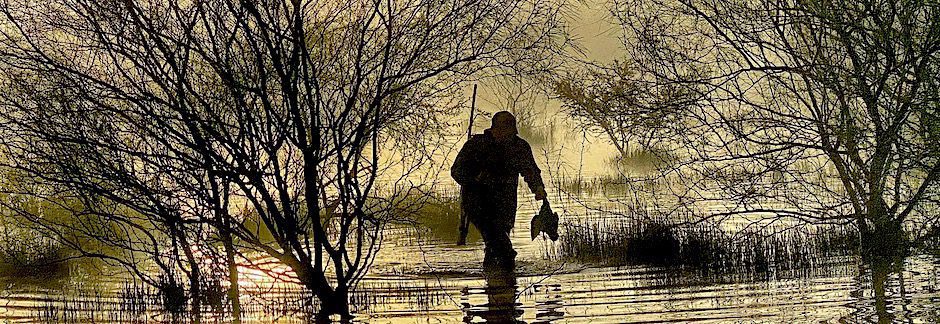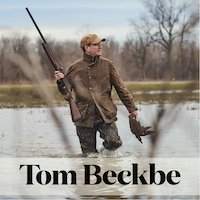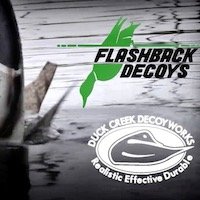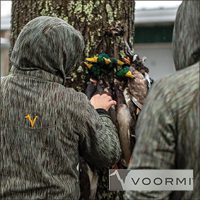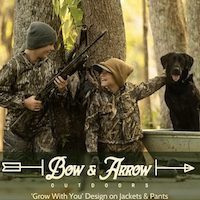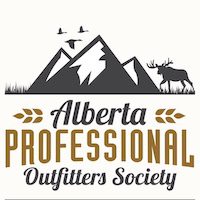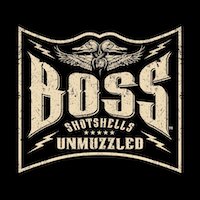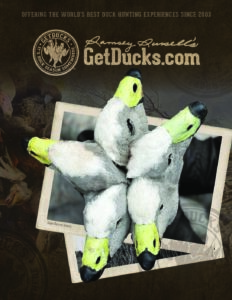MOJO’S Duck Season Somewhere Podcast
Chesapeake Bay Duck Hunting, Capt. Todd Sauerwald
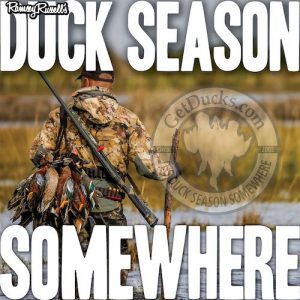
Captain Todd Sauerwald is a modern-day waterman. Year-long he plies his trades on the Chesapeake Bay as tugboat captain, crab fisherman and, as owner-operator of Black Duck Outfitters, a professional duck hunting guide. And on his days off? Yeah, he recreationally fishes those same waters. For those wanting to experience layout boat hunting the historic Chesapeake Bay, he’s your guy. What’re Sauerwald’s duck hunting roots and what lead him down this career path? What’re the similarities and differences hunting the Chesapeake Bay nowadays versus yesteryear? What’s layout boat hunting the Chesapeake Bay really like – hunting conditions, species, proper preparations and, importantly, how much ammo might you need?! And what about spring hunting for the greater snow goose subspecies? Like hunting long-tailed ducks over oyster reefs when weather conditions are perfectly miserable, this episode is action-packed with need-to-know-before-you-go info!
Related Links:
Chesapeake Bay Duck Hunting, with Capt. Todd Sauerwald, Black Duck Outfitters
Havre de Grace Maryland Duck Hunting, Jobes Decoys

Stepping into the decoy shop is like walking into the past. Located about a 1/4-miles from the fabled Susquehanna River, it’s as much duck hunting museum as thriving decoy business. Smells of sawdust and fresh paint permeate the air; shelved decoys and pinned photos, a combination of yesteryear and present. Ramsey Russell meets with Captains Charles, Bobby and Joey Jobes, gaining insight into the halcyon days of Chesapeake Bay duck hunting and traditional decoy carving. How’d the Jobes brothers become decoy carvers and what were their influences? What was it like growing up in Havre de Grace, hunting Susquehanna Flats? How have things changed? What about the uniquely regional hunting body booting method developed here and still ardently practiced today? This podcast episode of Duck Season Somewhere is a fun introduction to duck hunting the Chesapeake Bay.
Real New Jersey Duck Hunting

Following a 4-day stretch of daily American Black Duck limits, plenty other ducks and Atlantic brant kicked in for good measure, Ramsey Russell sits with hosts John Daffin and Jim White to sip rounds of “apple pie” and recount the past week’s New Jersey duck hunting events. What were these 2 long-time buddies hunting origins, how’d they meet? They hunt similar habitats, targeting similar species, but how do their hunting styles differ? What’s duck hunting really like in New Jersey, what are some of the unique political obstacles to duck hunting? What about the food? Pull up a chair and join in a real New Jersey duck camp-style BS session in the podcast episode of Duck Season Somewhere.
New Jersey Barnegat Bay Traditions Endure

Ramsey Russell meets with Bob Keeney, a 5th-generation Barnegat Bay duck hunter from Tuckerton, New Jersey. It was supposedly here, in what was formerly one of America’s largest waterfowl market hubs, that the earliest incarnations of hand-carved waterfowl decoys originated. It was here, for sure, that the deadly Barnegat Bay sneakbox hunting tradition began. What is a Barnegat Bay sneakbox, how’s it used, and how’d Keeney learn to make them at a very young age? What’s the traditional Barnegat Bay decoy rig, how important are black ducks to local hunters, and why is practicing these traditions important to young Keeney? What ever became of the hundreds of famous old duck clubs once occupying a nearby 30-mile stretch? What kind of coat did Babe Ruth once wear duck hunting and what became of it? Like a black duck form emerging slowly out of dense marsh fog, the past comes clearly into the present in today’s episode of Duck Season Somewhere.
Floating Artforms: New Jersey Decoy Carver Mike Braun

New Jersey decoy carver Mike Braun tells ramsey Russell about learning duck hunting and decoy carving the old-fashioned way. He was taught by his dad at a very young age. A self-described contemporary artist, he competes at the highest levels but also builds one-of-a-kind traditional gunners distinctly reflecting his New Jersey heritage. How old was Braun when his dad starting taking him duck hunting and what was his first duck? What unique bird species at the World Show inspired him start carving, when did it become a full-time vocation, and how long does it take him to carve each decoy? What does duck hunting over his own decoys mean to him personally? Today’s Duck Season Somewhere episode takes place among saw dust piles, where wooden blocks and nail-scratched feathering become gunning rigs, meaningfully connecting people to past generations. And to waterfowl.
Related Links:
New Jersey Game Warden Dave Faith

Dave Faith is a New Jersey Game Warden for NJ Division of Fish and Wildlife. He previously conducted waterfowl-related field biology. He’s also an avid duck hunter. How’d he get started duck hunting in New Jersey, what motivates him, and what species does he most like to chase? How much hunting opportunity even exists in a state with over 9 million citizens (3x times the population of, say, Mississippi)? What are some of the waterfowl projects he worked on? What are some of the wildlife law enforcement challenges in New Jersey, what is “buck week,” and why’s it keep him so busy? The 2020 North American Waterfowl Tour has brought Ramsey Russell to the outskirts of Atlantic City, New Jersey, where mass civilization interfaces with incredible marsh wilderness and rich waterfowling tradition.
Pennsylvania Black Duck Hunting and Reliving the Adventure, Kanati Elite Taxidermy

Following a frosty morning duck hunt along a heavily wooded, trout stream-sized river – and full to the gills from mountains of home-cooked eats – Ramsey visits with buddies Dave Beck and Tyler Coleman of Kanati’s Elite Taxidermy. They talk about Pennsylvania duck hunting, especially black ducks, but then wade chest deep into the everything-you-need-know waters of professional waterfowl taxidermy. What are typical Pennsylvania duck hunting set-ups, what species are usually targeted and how consistent is the hunting? Are black duck bands usually worn from age, or are there other reasons? What are the distinguishing hallmarks of a professionals versus a hobbyist, and what kind of customer service should really be expected? What is a “trophy”? What do you need to know about handling, storing and shipping your bird of a lifetime? Whether you’re just hanging a couple memories around your office or building a museum worthy waterfowl collection, here’s everything you should know and expect about getting your hard-earned dollar’s worth.
Related Links:
Coming Full Circle, Western New York Duck Hunting

Right about the time you think you’ve seen and done it all, you walk into a Western New York duck hunting blind. Eleven long finger-shaped lakes were carved into the Appalachian foothills by retreating glaciers, and every square foot of their perimeter is now occupied by summer cottages. Following a diver duck hunt within skipped stone distance of a home (and while waiting on pizza and buffalo wings), Ramsey discusses waterfowling with today’s guests, Keith Crowell and Louie Scafetta. How does western New York differ from the city and what do other New Yorkers think about duck hunting? Why did Louie describe a recent goose hunt with his grandfather as coming full circle? What ducks species are hunted on the finger lakes, and elsewhere in New York? And finally, what’s the proper way to eat real Buffalo wings?! Pay close attention, folks, like a bufflehead flying with gusty tailwind just inches off the water, this episode might catch you by surprise.
Hands-On Duck Hunting Traditions in Ohio

For father-son championship waterfowl decoy carvers, Mark and Luke Costilow, duck hunting is a year-round hands-on tradition. Following a huge supper of Canada goose Italian soup and freshly harvested, pan-seared mallards at their Coffee Creek Marsh Hunting Club, Ramsey and they settle in front of wood burning stove, visiting about Ohio duck hunting. What are their duck hunting origins? How’d they get into decoy carving and what were their influences? Do they ever hunt over plastics, and what’s the difference? How’d they turn a neglected stretch of creek into a nice hunting area, is it true that if you build it they’ll come, and why are family camp traditions important to them? As this episode demonstrates, hand-on anything makes it personal.
Chicken Soup: Arkansas Specklebelly Goose Hunting

As the 2020 North America Waterfowl Tour resumes, Ramsey’s first stop is Arkansas, where he falls in with a group of passionate full-time, all-specklebelly-nothing-but-specklebelly D-I-Y hunters headed by today’s guest, Aaron Carter. Arkansas specklebelly goose hunting is their thing. How’d this small circle of Mississippi friends become specialized in Arkansas white-fronted geese? In a region predominated by affluent clubs and expensive leases, how’d they develop their hunting areas? And what creepy event lead them to their present housing situation? What are their secrets for consistently killing specklebellies, and why do they choose to hunt with 20-gauge shotguns only? Like a warm bowl of momma’s chicken soup, this episode is just what you need.

